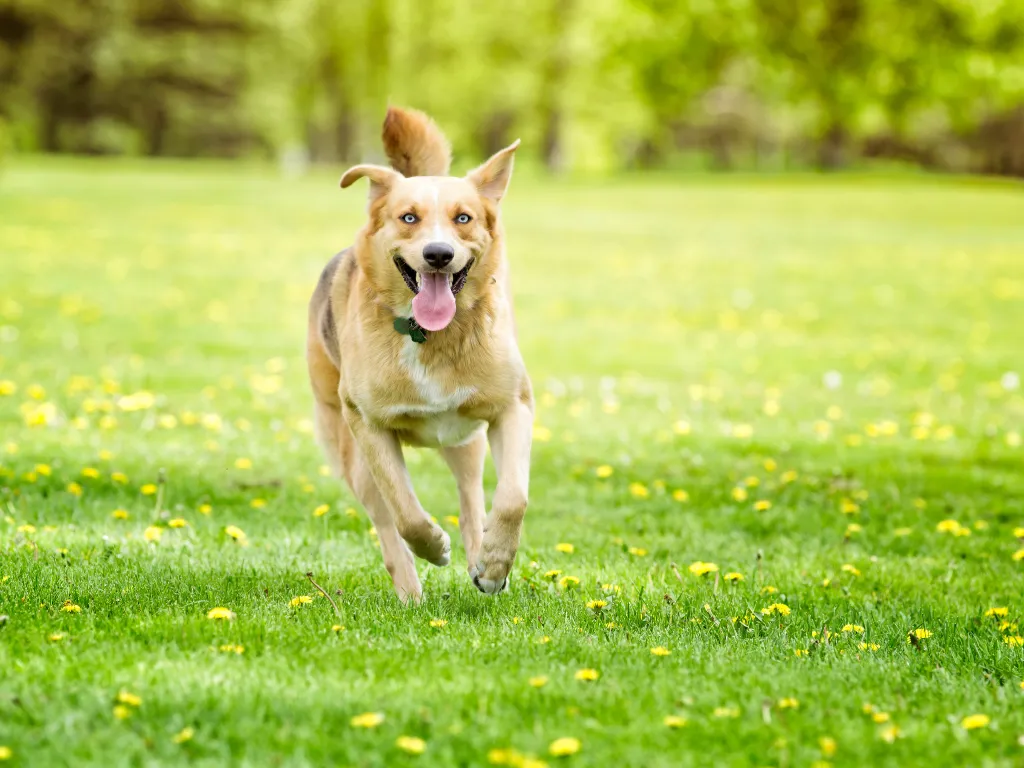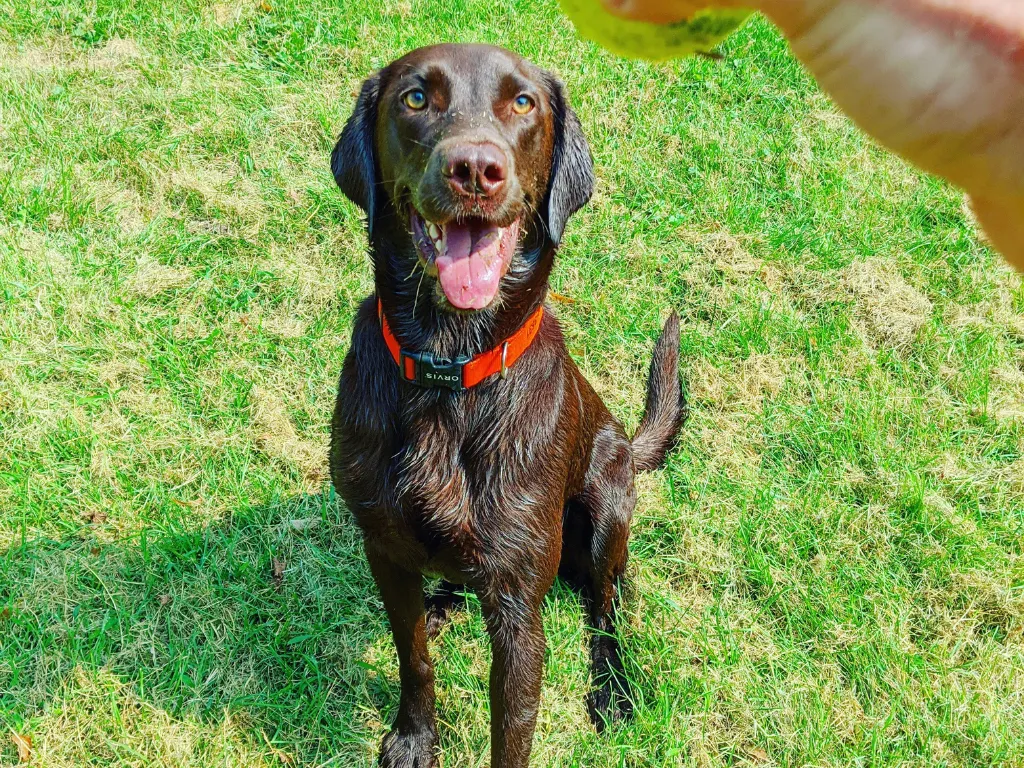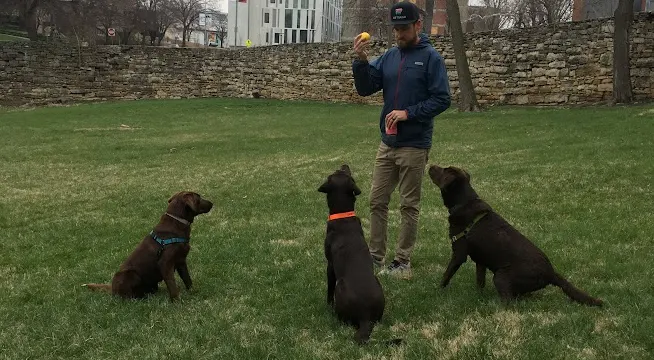Keeping Your Dog Active in Northwest Arkansas: How Play Builds Better Training
Every dog owner in Northwest Arkansas knows that a tired dog is usually a happy dog. But there is a big difference between simply tiring your dog out and using activity as a chance to strengthen your bond and improve training. Whether it is a walk on the Razorback Greenway, a game of fetch in the yard, or a trip to the park, every bit of movement can become part of your dog’s learning journey.

The Purpose Behind Everyday Activity
Exercise is not just about burning energy. It is a key ingredient in shaping calm, confident, and well-mannered dogs. Regular movement improves muscle tone, supports joint health, and balances hormones that influence mood and focus.
From a scientific perspective, physical activity helps release serotonin and dopamine, chemicals that keep your dog happier and more focused. Mentally, exercise gives dogs a healthy outlet for their instincts to chase, sniff, and explore. Evolutionarily, dogs have always worked alongside people through herding, hunting, and guarding, which required both strength and problem-solving.
When those instincts are ignored, dogs often create their own “jobs,” such as barking at the window or chewing furniture. By keeping your dog active in structured, fun ways, you provide purpose and reduce unwanted behaviors before they start.
Building Better Habits Through Play and Movement
You do not need a rigid exercise routine to make a difference. A few intentional habits can help your dog stay engaged, focused, and connected to you.
- Start small and stay consistent: A couple of focused play sessions a day are more effective than one long burst of chaos. Consistency helps dogs know what to expect and builds routine.
- Make it interactive: Games like fetch, tug, or hide-and-seek can double as training time. You are not just playing; you are reinforcing skills like recall, impulse control, and patience.
- Vary the environment: A stroll through your neighborhood one day and a trip to the park the next keeps things interesting. Each new setting provides sights, sounds, and smells that build confidence.
- Combine cues with movement: During walks or playtime, sprinkle in commands like “sit,” “stay,” or “come.” This helps your dog practice listening when excited, which is a key skill for real-world obedience.
A Real-Life Example: Barry and the Frisbee or Ball

At Newman’s Dog Training, we believe training should blend naturally into everyday fun. Take our own dog, Barry, for example. He absolutely loves playing fetch with his frisbee. When he has that frisbee (a tennis ball is just as good) in his mouth, his focus is incredible. It is his favorite reward and motivation all in one.
Because Barry loves the game so much, it is easy to work on training while we play. We can take him out front where neighbors are chatting, kids are running around, and cars occasionally pass by. Even with all that distraction, he listens closely because the frisbee keeps him motivated.
That is the power of combining exercise with training. By turning playtime into a learning opportunity, you build reliability and focus without it feeling like work for your dog.
How Activity Strengthens Training
Movement is not just physical; it is communication. When you guide your dog through active experiences, you are teaching them how to follow your lead and make good choices.

Dogs that get regular exercise are more focused during lessons and less reactive to everyday triggers. For example, a dog who goes on structured walks or has a short game of fetch before practicing leash manners will have an easier time listening. Their energy is balanced, their brain is engaged, and they are more open to learning.
Activity also builds trust. When dogs experience new things such as trails, noises, or other dogs with their owner calmly leading the way, they learn that the world is safe. This confidence directly translates into better behavior in public and at home.
Fun Facts About Active Dogs
- Dogs that exercise regularly show lower levels of cortisol, the stress hormone, and higher levels of endorphins, which promote happiness.
- Puppies can begin light exercise as early as eight weeks old, focusing on coordination and confidence rather than endurance.
- Older dogs benefit from gentle, consistent movement that helps keep joints flexible and muscles strong.
- Dogs that use both physical and mental energy each day are less likely to develop destructive behaviors such as chewing or digging.
- Adding just five minutes of training games to your daily routine can dramatically improve focus and obedience.
Bringing It All Together
Staying active with your dog should not feel like a chore. It should feel like play. Whether it is tossing a ball, going for a neighborhood walk, or exploring the Razorback Greenway, these moments are opportunities to teach, connect, and enjoy time together.
The secret is to see every activity as a small piece of training. A walk teaches patience. Fetch teaches recall. Tug teaches impulse control. It all adds up to a stronger bond and a better-behaved dog.
At Newman’s Dog Training, we love finding creative ways to turn everyday activities into meaningful learning moments. We help families make exercise fun and rewarding, building better communication, confidence, and trust without it ever feeling like formal training. When you enjoy the process together, your dog learns faster, and you both have a lot more fun along the way.
We proudly offer dog training services in both Kansas City and Northwest Arkansas, including Bentonville, Fayetteville, and surrounding areas.
Ready to take the next step?
Book your free consultation today and let’s design the perfect plan for your dog.
Step up your dog training game with access to our entire course library and special
rates for one-on-one sessions. Unlock your potential now!
Save More, Learn More, Achieve More!
Please contact us if you have any questions on these tips, [email protected]
Also, follow us on Instagram and Facebook.

